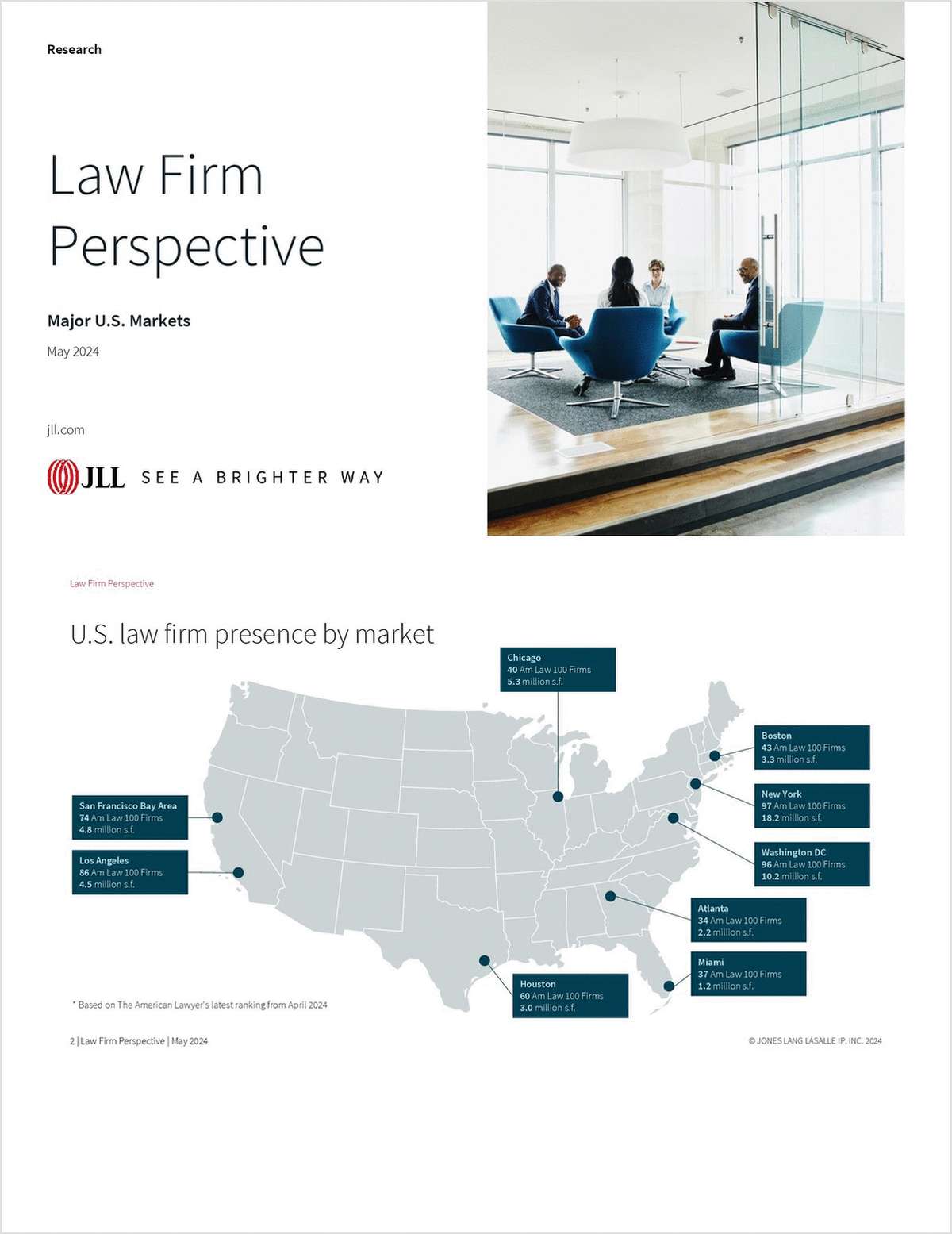 Photo: Diego M. Radzinschi/ALM
Photo: Diego M. Radzinschi/ALM'The Last Straw': The Pandemic Is Accelerating Known Need to Cut Admins
There are long-term savings, firm leaders and experts agree, but the short-term gains are minimal. The real driver is about shaping the law firm for the future.
July 29, 2020 at 07:50 PM
6 minute read
Law firms are learning that they are overstaffed in certain positions, especially at the legal administrative assistant (LAA) position. Several firm leaders and an academic weighed in on the issue, and all asserted that the decision on whether to release LAAs, during a pandemic nonetheless, is less about short-term economic preservation and more about preparing the law firm structure for the future in what is an interesting moment of confluence between differing generational skill sets, technology and new working conditions in a post-pandemic world.
"The money … there are not real savings in the short term," said one law firm leader, who spoke on the condition of anonymity. "By the time you get through severance and continued health insurance, it's not."
Eric Talley, the Isidor and Seville Sulzbacher Professor of Law at Columbia Law School, agreed.
"They don't save that much in salary and benefits," he said. "My guess is simple monetary savings aren't going to be the drivers behind these decisions."
The math on this makes sense. The average salary for a legal secretary in New York, which averages about 12% above the national average, is about $50,000 a year, according to close to 9,000 voluntary salary submissions gathered by job site Glassdoor. Salaries at more marquee firms can be much higher, around $80,000, which is on the far end of the Glassdoor "high" spectrum. A search of Robert Half's website for legal secretaries in New York City with seven to 11 years of experience shows them making between $71,000 and $107,482, with a midpoint salary of $87,461.
Take Sullivan & Cromwell as an example, assuming 30 of the 50 layoffs undertaken by the firm recently were LAAs for the sake of illustrating potential savings.
(Note: The number of assumed LAAs is derived from conversations with managing partners and industry experts regarding the types of staff laid off generally and the percentage of those who worked in an LAA capacity. It is not meant to be a specific count for Sullivan & Cromwell, but rather a reflection of the informed opinions of those involved in similar discussions at other firms.)
At $80,000 per person per year, you get $2.4 million in salary. Assuming continued health coverage, most benefit savings are nullified. Divided by the firm's profits you end up with a first-year annual savings of 0.3% of the firm's gross profit. Not exactly eye-catching savings.
A longtime industry expert, who spoke on condition of anonymity, said that the real savings for the firm come after the first year the employee is let go.
"In the first year you have severance and health care extension that can easily eat up savings," the expert said. "The real savings come after the severance and extended health care expire and they would likely expire on separate timelines. You figure staff compensation is somewhere around 12% to 15% of revenue. So it is a sizable cost area. But small adjustments to staff to reflect operating needs are not likely to have an overly large positive effect short term."
The law firm leader mentioned earlier said as much, stating that if their firm did in fact issue cuts to their LAAs, which they have yet to do, it would be more about preparing the firm for a world in which real estate is looked upon differently and attorneys are more capable of fending for themselves when it comes to doing tasks historically delegated to assistants.
"Back in the day, the ratio of LAAs to lawyers was two to one, maybe three to one," the leader said. "Now it is four or five to one. The younger lawyers don't need as much help."
As those older attorneys age out of practice, their former assistants are not as necessary to those who replace them, creating a redundancy in skill sets necessary for business as usual.
Another law firm leader, who also spoke on the condition of anonymity, said their firm had made incremental progress in lowering their ratio of LAAs to attorneys over the past several years, but attrition and turnover were not getting them where they needed to be.
"We are revamping how we do things," the leader said. "Not just LAAs. People will need to be more diversified in what they do. This isn't because of the pandemic, but it was sort of the last straw."
But even if the firm has a solid business case for shedding LAAs, other factors come into play.
"Firms have to ask themselves how they manage their entire community," Talley said. "Some of the furloughed or laid-off folks may have 20-year relationships with an attorney. That is where things get difficult from a managing partner perspective."
They do indeed. The same firm leader who had yet to reduce their LAA count (outside of normal attrition and retirement), said they are struggling with that daily.
"My biggest job, and I feel strongly about this, is to protect the culture of the firm," the leader said. "I think profits are great and I want people to make a lot of money, but I take this much more seriously. It's a balance, and you have to be smart."
Talley said, as has been mentioned before, that the success of remote working and the pandemic-related space concerns have amplified a sectoral shift that has been happening for some time. And it has been happening somewhat under the radar, not only to the media reporting on it, but even to the firms themselves, who have looked to avoid making these difficult decisions that can impact morale, their reputation to their clients and to the public at large.
"There is the potential for dissonance here," Talley said. "They have to ask how they want to manage their law firms. Is it through brutal economics alone? Firms are advising their clients on how to think broadly about their business. They are now having to do the same."
This content has been archived. It is available through our partners, LexisNexis® and Bloomberg Law.
To view this content, please continue to their sites.
Not a Lexis Subscriber?
Subscribe Now
Not a Bloomberg Law Subscriber?
Subscribe Now
NOT FOR REPRINT
© 2024 ALM Global, LLC, All Rights Reserved. Request academic re-use from www.copyright.com. All other uses, submit a request to [email protected]. For more information visit Asset & Logo Licensing.
You Might Like
View All
Simpson Thacher Launches in Luxembourg With Hires From A&O Shearman, Clifford Chance
3 minute read

A&O Shearman's Former U.S. Co-Chair to Leave Partnership

Law Firms Mentioned
Trending Stories
- 1Judicial Ethics Opinion 24-68
- 2Friday Newspaper
- 3Judge Denies Sean Combs Third Bail Bid, Citing Community Safety
- 4Republican FTC Commissioner: 'The Time for Rulemaking by the Biden-Harris FTC Is Over'
- 5NY Appellate Panel Cites Student's Disciplinary History While Sending Negligence Claim Against School District to Trial
Who Got The Work
Michael G. Bongiorno, Andrew Scott Dulberg and Elizabeth E. Driscoll from Wilmer Cutler Pickering Hale and Dorr have stepped in to represent Symbotic Inc., an A.I.-enabled technology platform that focuses on increasing supply chain efficiency, and other defendants in a pending shareholder derivative lawsuit. The case, filed Oct. 2 in Massachusetts District Court by the Brown Law Firm on behalf of Stephen Austen, accuses certain officers and directors of misleading investors in regard to Symbotic's potential for margin growth by failing to disclose that the company was not equipped to timely deploy its systems or manage expenses through project delays. The case, assigned to U.S. District Judge Nathaniel M. Gorton, is 1:24-cv-12522, Austen v. Cohen et al.
Who Got The Work
Edmund Polubinski and Marie Killmond of Davis Polk & Wardwell have entered appearances for data platform software development company MongoDB and other defendants in a pending shareholder derivative lawsuit. The action, filed Oct. 7 in New York Southern District Court by the Brown Law Firm, accuses the company's directors and/or officers of falsely expressing confidence in the company’s restructuring of its sales incentive plan and downplaying the severity of decreases in its upfront commitments. The case is 1:24-cv-07594, Roy v. Ittycheria et al.
Who Got The Work
Amy O. Bruchs and Kurt F. Ellison of Michael Best & Friedrich have entered appearances for Epic Systems Corp. in a pending employment discrimination lawsuit. The suit was filed Sept. 7 in Wisconsin Western District Court by Levine Eisberner LLC and Siri & Glimstad on behalf of a project manager who claims that he was wrongfully terminated after applying for a religious exemption to the defendant's COVID-19 vaccine mandate. The case, assigned to U.S. Magistrate Judge Anita Marie Boor, is 3:24-cv-00630, Secker, Nathan v. Epic Systems Corporation.
Who Got The Work
David X. Sullivan, Thomas J. Finn and Gregory A. Hall from McCarter & English have entered appearances for Sunrun Installation Services in a pending civil rights lawsuit. The complaint was filed Sept. 4 in Connecticut District Court by attorney Robert M. Berke on behalf of former employee George Edward Steins, who was arrested and charged with employing an unregistered home improvement salesperson. The complaint alleges that had Sunrun informed the Connecticut Department of Consumer Protection that the plaintiff's employment had ended in 2017 and that he no longer held Sunrun's home improvement contractor license, he would not have been hit with charges, which were dismissed in May 2024. The case, assigned to U.S. District Judge Jeffrey A. Meyer, is 3:24-cv-01423, Steins v. Sunrun, Inc. et al.
Who Got The Work
Greenberg Traurig shareholder Joshua L. Raskin has entered an appearance for boohoo.com UK Ltd. in a pending patent infringement lawsuit. The suit, filed Sept. 3 in Texas Eastern District Court by Rozier Hardt McDonough on behalf of Alto Dynamics, asserts five patents related to an online shopping platform. The case, assigned to U.S. District Judge Rodney Gilstrap, is 2:24-cv-00719, Alto Dynamics, LLC v. boohoo.com UK Limited.
Featured Firms
Law Offices of Gary Martin Hays & Associates, P.C.
(470) 294-1674
Law Offices of Mark E. Salomone
(857) 444-6468
Smith & Hassler
(713) 739-1250










